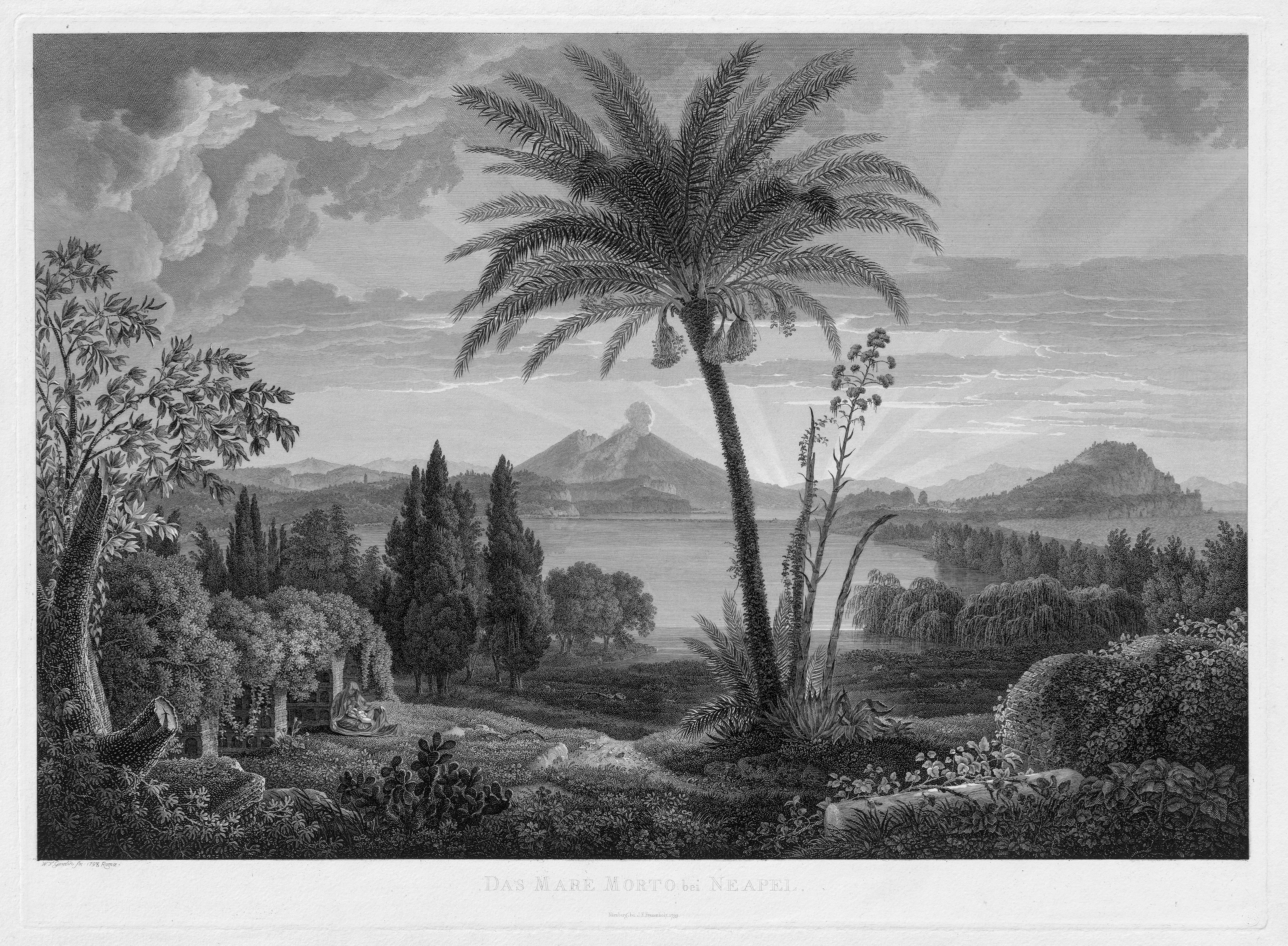Loading the page ...
Wilhelm Friedrich Gmelin
(1745 Badenweiler – 1820 Rome)
“The Mare Morto near Naples”. Etching and engraving on wove paper. 49.6 x 67.9 cm. 1798. Heller-Andresen 9 II (of V).
This spectacular view of the enchanting setting of the so-called Mare Morto on the Capo di Miseno in the Gulf of Naples undoubtedly ranks as one of the principal works of the engraver, Wilhelm Friedrich Gmelin. Born in Badenweiler in 1745, he
went to Rome in early 1787. In the spring of that year he visited Naples, where he was invited by Johann Philipp Hackert to make reproductive engravings after some of his vedute. In 1790 Gmelin returned to Rome, where he ran a flourishing engraving business. He remained in the city with a brief interruption until his death. Among his friends were prominent visitors to Rome, including Wilhelm von Humboldt, Friederike Brun and Carl Ludwig Fernow. Around 1810 Gmelin and his fellow artist Johann Christian Reinhart discovered the Cervaro grottoes.
This rare print has been executed in a varied and highly differentiated etching technique and is the perfect embodiment of the ideal of Italy that was prevalent in Goethe’s time. The beautifully picturesque southern landscape is presented in panoramic breadth; visible on the horizon is the mighty silhouette of Vesuvius, from the crater of which a cloud of smoke rises. A majestic, expansive palm tree and a few agaves in the foreground serve as a visual repoussoir. A young woman with her two infant children reposes in the shelter of antique remains in this sumptuous, fertile natural setting. The beams of the setting sun bathe the scene in an almost supernatural light.
A superb, differentiated early impression with thread margins, only with the needle letters, before the coat of arms and the dedication. In the final state the etching was given an English title, probably to meet the demand from English travellers
on the Grand Tour. Minimal traces of handling, otherwise in excellent condition. With the die stamp of the publisher Johann Friedrich Frauenholz (1758–1822, Lugt 994).
